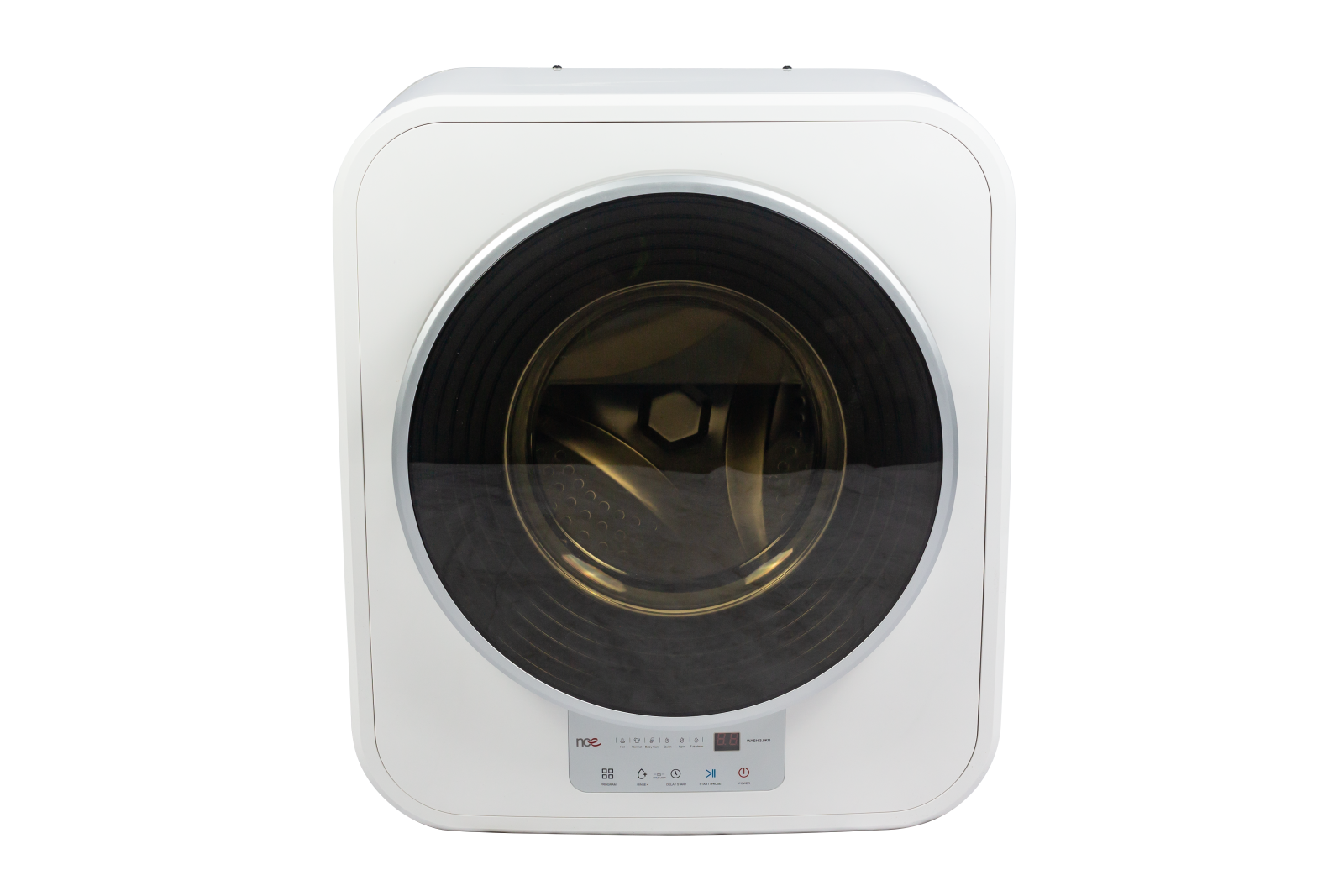Front-Loader vs Top-Loader Caravan Washing Machines, What Suits Your Van Setup?

Front-Loader vs Top-Loader Washing Machines for Caravans
Caravan laundry is its own world. The way a washer fits your floor plan, how much tank water it drinks, and how it behaves after rough roads matters more than any home-style feature list. Below is a practical comparison of front-loaders and top-loaders in real caravan use, without running through a full buyers guide again.
Understanding the two styles
A front-loader uses a horizontal drum and a front door, washing by tumbling clothing through a shallow water fill. A top-loader uses a vertical drum and a lid on top, washing by agitating or pulsing through a deeper fill.
In a caravan, that difference changes three things straight away, how much water you burn per load, how the machine is mounted, and how comfortable it is to use when space is tight.
How they fit into caravan spaces
Front-loaders
Front-loaders work well under benches or on a wall because they only need front clearance. That keeps walkways open and lets the washer live in a dedicated laundry nook rather than the middle of the van.
A good example is the NCE 3.0kg Wall Mounted Washing Machine. It is built for compact installs that free up floor area.
Top-loaders
Top-loaders need overhead clearance for the lid, so they tend to sit in open areas or inside a cupboard with a lift-up door. They usually have a small footprint but more height, which suits some layouts and blocks others.
If you want a simple floor unit with easy access, NCE Washer 3.5kg Black is a clean top-loader style made for caravan use.

.png)
Water, power, and off-grid reality
Water usage
Front-loaders generally use less water because tumbling works with a shallow fill. Top-loaders have improved a lot, but they still tend to use more water on medium and full cycles.
If you are off-grid, that gap adds up quickly across a week. If you stay mainly in parks, water use is less critical, but it still affects how often you top up tanks on travel days.
Power draw
Power depends on the style and the exact model. Some caravan front-loaders heat water, which lifts peak draw. Most caravan top-loaders are cold water only, so peak draw is usually lower.
If you mostly run on site power, a heated front-loader is easy to live with. If you rely on solar and an inverter, keeping peaks low might push you toward a top-loader.
Loading and accessibility
Top-loaders are simple day to day, you stand upright and load from above, and many let you add items mid-cycle without fuss.
Front-loaders can be less comfortable if installed low, because you need to bend. Wall mounting higher up helps, but you still need door swing space in front.
Installation and mounting considerations
Front-loaders need good levelling. If the machine is not square and stable, spin cycles can shake hard. Wall-mounted units also require solid bracing or a proper mounting kit for vibration over corrugations.
Top-loaders are usually easier installs. They sit on the floor or a raised platform and are strapped down for travel. They still need a stable base, but they are generally more forgiving when a caravan is not perfectly level.
Maintenance, vibration, and travel impacts
Both styles benefit from the same basics, do not run a cycle while driving, park level before washing, and avoid overloading. Those three habits prevent most shake and noise complaints.
Front-loaders are more sensitive to unbalanced loads during spin. Top-loaders can still vibrate, but many travellers find them a bit more tolerant of smaller, frequent loads.
Quick upkeep that helps both styles, check hoses after corrugated roads, clean lint filters often, keep loads modest, and leave the door or lid slightly open after washing so the drum airs out properly.
Real-world scenarios
Scenario A, you spend lots of time off-grid
If you are away from powered sites for long stretches, water efficiency usually comes first. A front-loader is often the better match here. Just confirm your power system is comfortable with any higher-draw phases.
Scenario B, you want simple loading and short cycles
If you do small daily loads and want easy access from above, a top-loader feels natural. Many caravan top-loaders also run quick practical cycles that suit travel routines.
Scenario C, your layout is tight
If floor space matters more than anything, a wall-mounted or under-bench front-loader is a tidy solution. It keeps the laundry out of the walkway and gives you usable storage or foot room where a floor unit would sit.
Front-loader vs top-loader (at a glance)
FAQs
Can I add clothes mid-cycle in a front-loader caravan washer?
Sometimes, but not always. Many front-loaders lock the door during operation for sealing and safety. Top-loaders usually make mid-cycle additions easier because the lid opens from above.
Which style is better if I am off-grid with limited tank water?
Front-loaders usually suit off-grid touring because they use less water per wash. If power is tighter than water for you, a cold water top-loader can still be a good fit.
Do front-loaders shake more in caravans?
They can if the van is not level or the load is unbalanced. Small, evenly spread loads make a big difference for either style.
Is a wall-mounted washer worth it in a caravan?
If floor space is tight, yes. Wall-mounted front-loaders clear walkways and keep storage usable. Make sure the mount is correctly braced for travel vibration.
What capacity is enough for caravan travel?
It depends on the crew size and how often you wash. Couples usually find 2.5kg to 3.0kg plenty. Families often prefer 3.3kg to 3.5kg to reduce the number of cycles.

